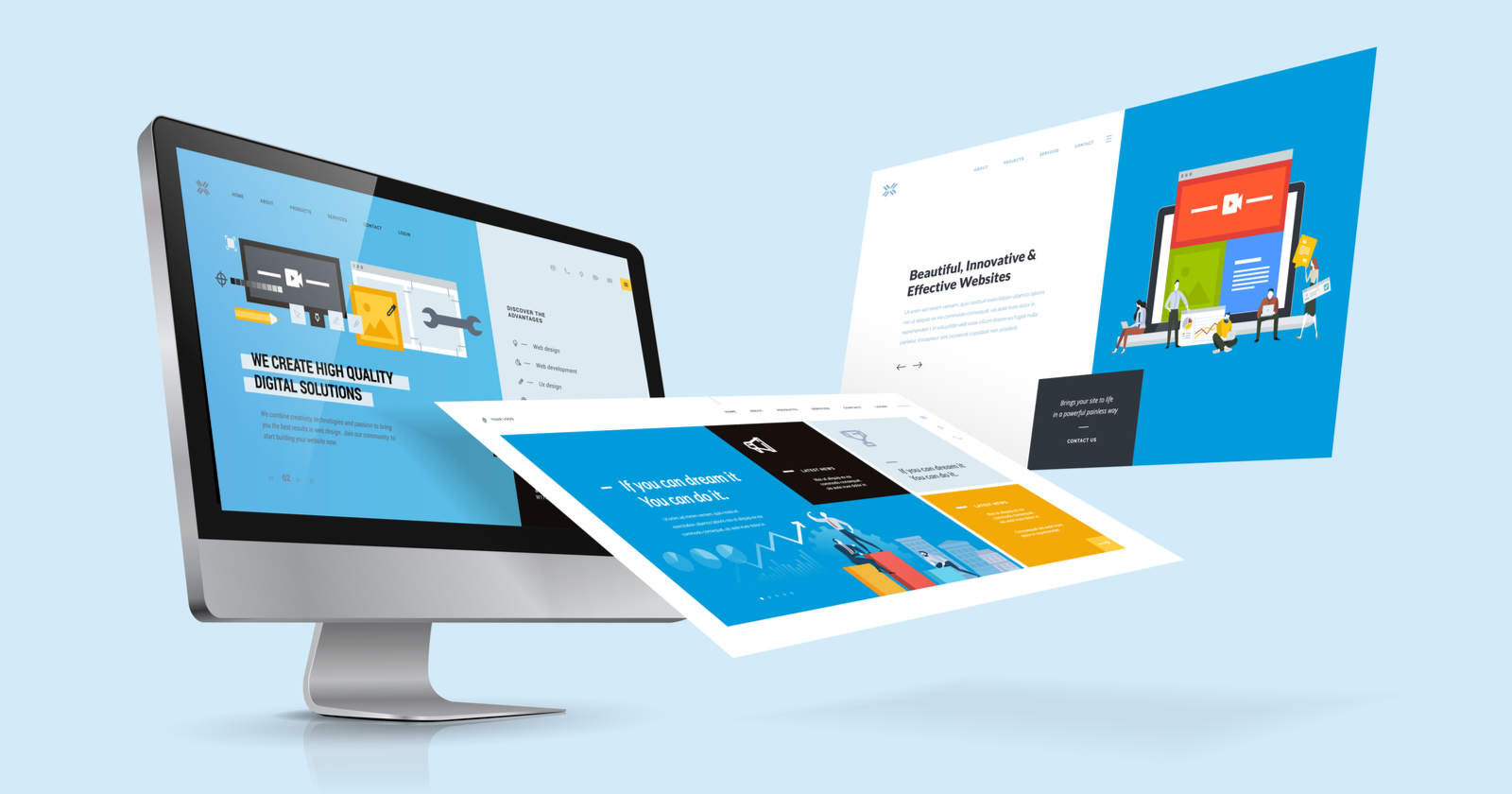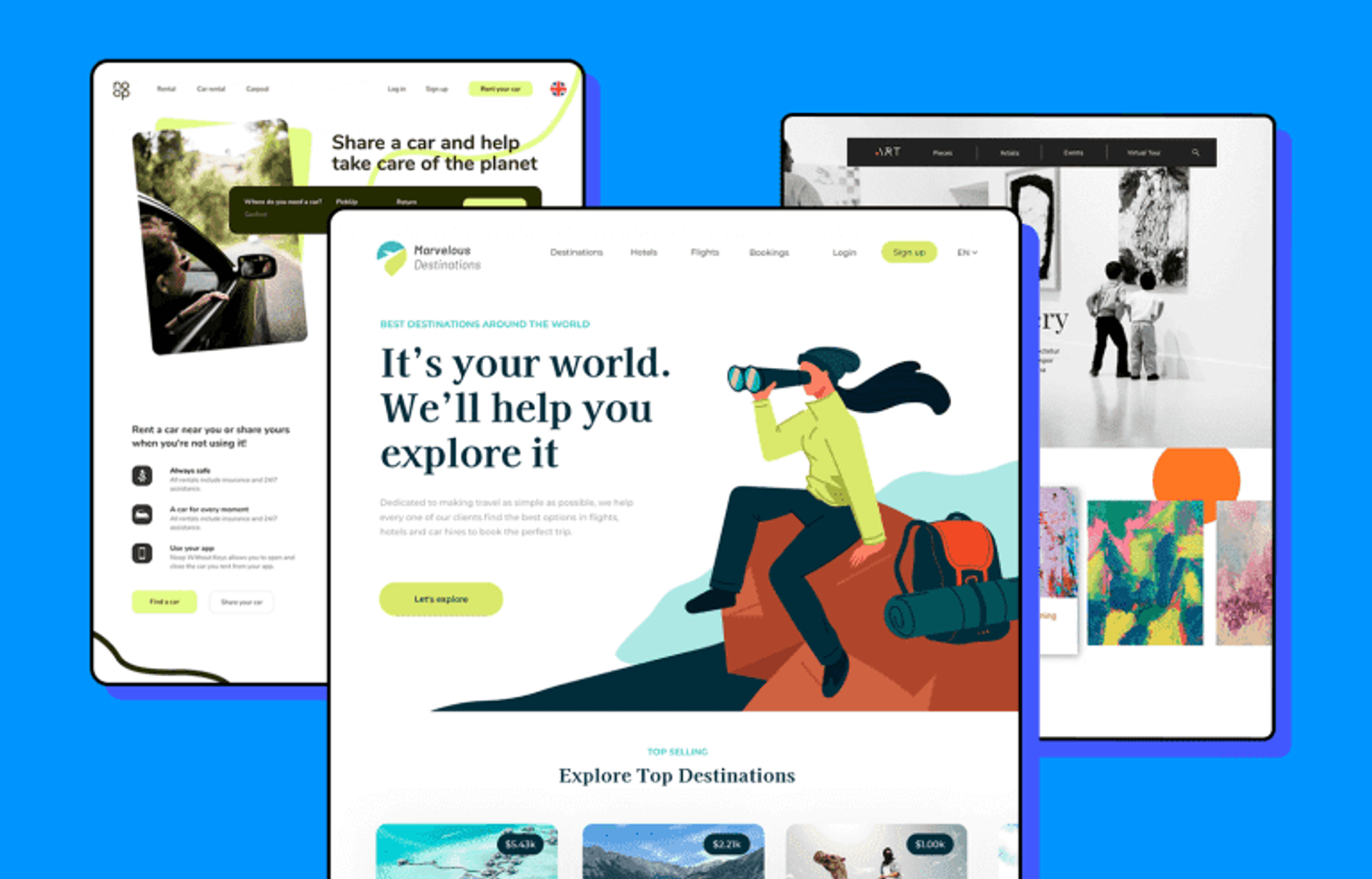Exactly How to Improve User Experience Via Strategic Website Design
In the realm of digital innovation, user experience (UX) has actually come to be the cornerstone of successful website design. A critical, user-centered technique, highlighting visual consistency, instinctive designs, and responsive layout, can significantly improve an internet site's usability and charm. As we explore these concepts thoroughly, the significance of incorporating user responses and the role of UX in customer retention will additionally be analyzed, welcoming a deeper understanding of this important aspect of internet layout.
Recognizing the Importance of Individual Experience in Web Style
The significance of website design exists not merely in aesthetics, however basically in the user experience it uses. User experience, or UX, refers to the general experience an individual has while communicating with an internet site or web application, especially in regards to how comfortable and pleasing it is to make use of (Web Design In Guildford). It is an important element of website design, as it directly influences the customers' impacts, actions, and general communication with the website
A properly designed internet site with a poor individual experience is comparable to a beautiful building with a badly intended inside; it may look appealing externally, however it falls short to offer its desired purpose efficiently. It may discourage users from remaining on the internet site, bring about high bounce prices, low customer involvement, and ultimately, failure to achieve the website's goals. This highlights the significance of integrating user experience into the web design process right from the outset.
Using User-Centered Layout Concepts
The application of user-centered style principles starts with understanding user behavior. This expertise creates the basis for developing an efficient interface design. These two crucial aspects, when skillfully combined, lead to a boosted individual experience on any type of site.

Comprehending Individual Actions
Why do individuals behave the means they do on sites? User behavior is determined by a wide range of factors, principal among them being their certain needs and choices, prior online experiences, and total web savviness. The layout of the site additionally plays a considerable role. A tidy, instinctive design can guide individuals to act in a specific way, such as leading them toward details actions or details. On the other hand, a confusing or messy layout can prevent communication and result in high bounce prices. Comprehending customer habits entails researching and evaluating these patterns and fads. Using this expertise, internet developers can develop more efficient, straightforward sites that meet the demands of their audience, thus improving customer experience.
Effective User Interface Design

Leveraging Responsive Design for Optimal Viewing
Moving on in the discussion, the focus currently shifts to the significance of leveraging receptive style for optimal viewing. This entails checking out the procedure of implementing receptive web design and recognizing its effect on individual experience. The occurring conversation aims to illuminate the benefits of ideal watching and how responsive style promotes it.
Carrying Out Receptive Website Design
Using the power of receptive web layout is an essential step towards improving user experience. These aspects incorporated produce a receptive internet layout that adjusts to the individual's requirements. While the procedure might seem complicated, the end result is a much more available and instinctive internet site, substantially boosting the user experience.
Advantages of Ideal Viewing

Furthermore, receptive layout can bring about improved search engine optimization rankings, as search engines prefer websites that accommodate numerous devices. Last but not least, it can decrease bounce prices and boost conversion rates as users are less most likely to abandon sites that are simple to navigate. Therefore, visit the site ideal viewing can considerably enhance individual experience, making it an essential aspect of strategic internet layout.
Incorporating Easy Navigation and Intuitive Layouts
Relieve and intuition in website navigating create the bedrock of user satisfaction. If individuals struggle to find what they are trying to find, they are likely to abandon the site and seek options. A critical web design need to incorporate clear, easy-to-follow navigation and an intuitive layout. This can be achieved by arranging information in a published here hierarchical framework, with one of the most vital sections plainly included.
Basic navigating menus, breadcrumb routes, and clickable switches assist users with the website effortlessly. Uniformity in layout components throughout web pages likewise adds to instinctive navigating. Placing the search bar or the shopping cart icon in the exact same spot on every web page enables users to locate these features rapidly.
Furthermore, an user-friendly layout is one that anticipates individual needs. It positions elements and details where individuals expect them to be. This reduces the cognitive tons on customers, boosting their overall experience on the internet site.
The Function of Visual Design in Individual Experience
While the framework and format of a website are significant for customer experience, the visual layout plays a similarly crucial function. A chaotic or irregular aesthetic design can lead and perplex users to an adverse individual experience. Internet developers should tactically use aesthetic layout components to produce a instinctive and unified individual interface that improves the overall customer experience.
Instance Studies: Successful User Experience Layout in Activity
In spite of the theoretical understanding on user experience layout, it gets genuine value when used in functional scenarios. Airbnb, a global on the internet marketplace, effectively enhanced their individual experience by upgrading their site.
The results were a substantial boost in mobile website traffic and individual engagement, demonstrating the efficiency of tactical web layout in enhancing customer experience. These situation research studies reveal that practical application of customer experience design can yield substantial benefits.
Final thought
In final thought, strategic website design is a vital device in improving user experience. By using user-centric design concepts, leveraging responsive design, incorporating instinctive navigation and designs, and utilizing the power of aesthetic style, companies can produce sites that are pleasing and involving for customers. Reliable web style, showcased through various successful study, substantially raises user involvement and retention prices, confirming its important duty in digital success.
As we check out these concepts in detail, the value of incorporating user comments and the role of UX in individual retention will certainly additionally be taken a look at, welcoming page a deeper understanding of this crucial aspect of web layout.
It may hinder individuals from remaining on the web site, leading to high bounce prices, reduced individual interaction, and inevitably, failure to achieve the website's objectives. A messy or inconsistent visual layout can lead and confuse customers to a negative user experience. Internet developers need to tactically make use of aesthetic design components to produce a harmonious and intuitive customer interface that boosts the total user experience. The outcomes were a substantial increase in mobile web traffic and individual involvement, showing the effectiveness of tactical web style in enhancing customer experience.
 Emilio Estevez Then & Now!
Emilio Estevez Then & Now! Bradley Pierce Then & Now!
Bradley Pierce Then & Now! Dylan and Cole Sprouse Then & Now!
Dylan and Cole Sprouse Then & Now! Matilda Ledger Then & Now!
Matilda Ledger Then & Now! Tina Majorino Then & Now!
Tina Majorino Then & Now!